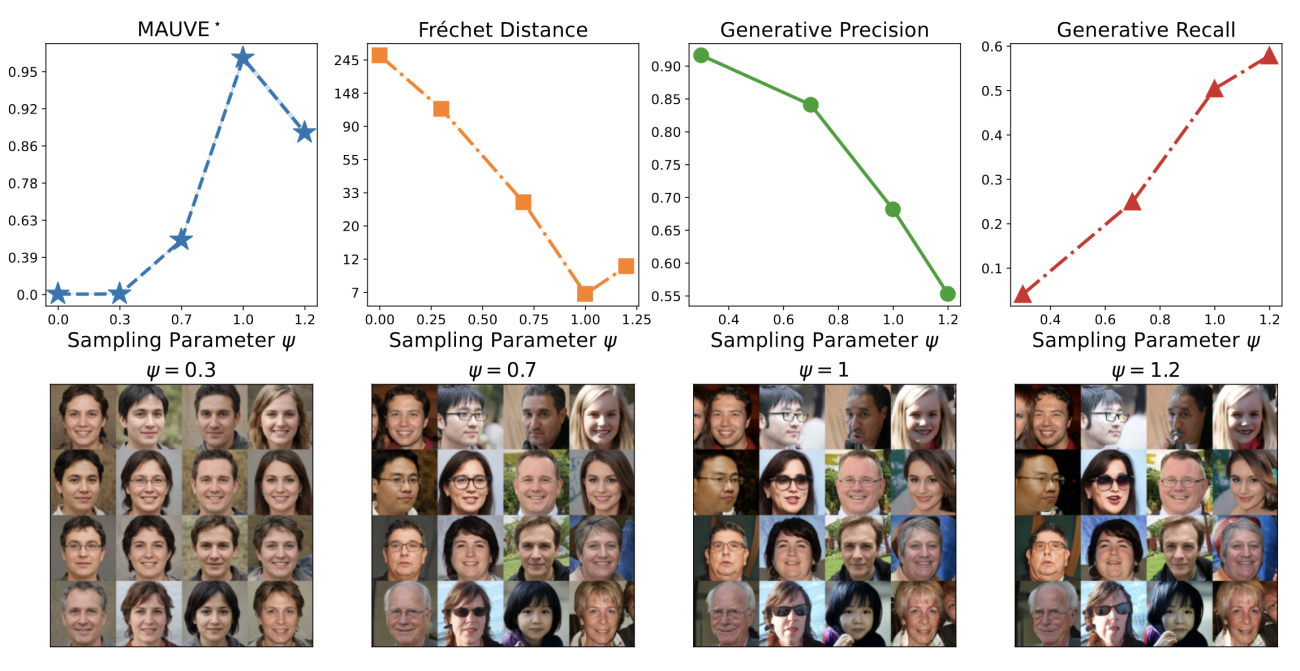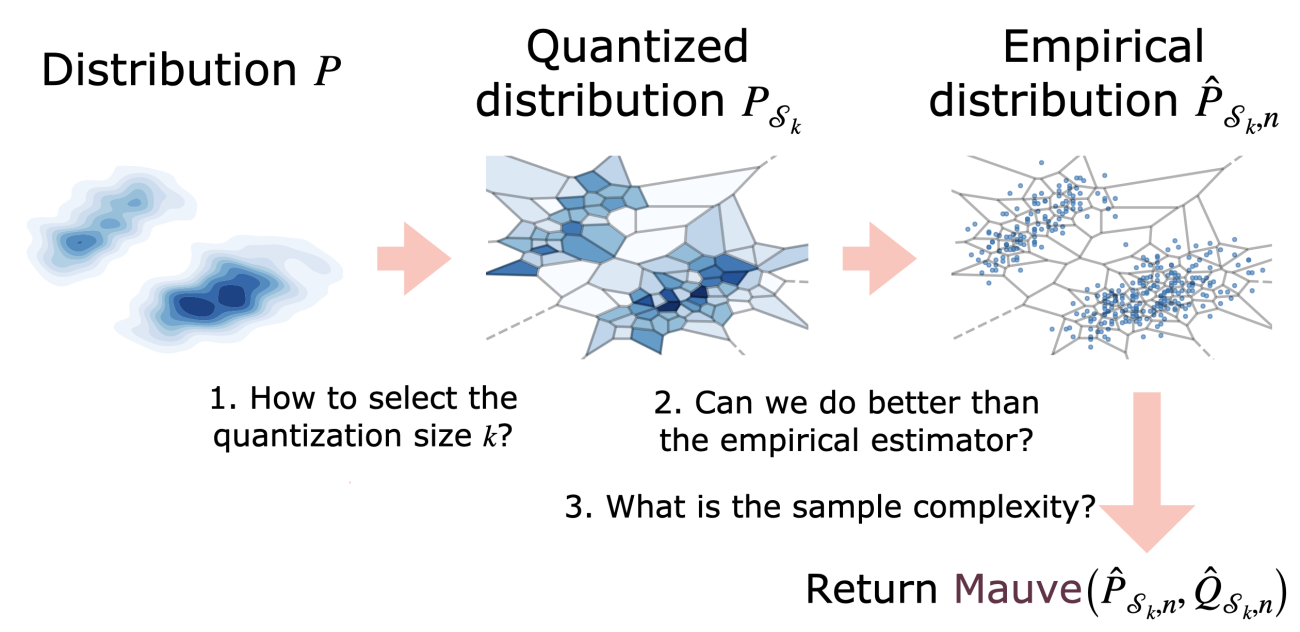MAUVE: Statistical Evaluation of LLMs and Generative AI

Generative AI has made remarkable strides in the last few years, producing text that's indistinguishable from human prose and incredibly photorealistic images and videos. Automatically measuring how close the generated data distribution is to the target distribution is central to diagnosing existing models and developing better ones. We present MAUVE, a family of comparison measures between pairs of distributions such as those encountered in the generative modeling of text or images. These scores are statistical summaries of divergence frontiers capturing two types of errors in generative modeling. We explore three approaches to statistically estimate these scores: vector quantization, non-parametric estimation, and classifier-based estimation. We provide statistical bounds for the vector quantization approach.
Empirically, we find that the proposed scores paired with a range of f-divergences and statistical estimation methods can quantify the gaps between the distributions of human-written text and those of modern neural language models by correlating with human judgments and identifying known properties of the generated texts. We demonstrate in the vision domain that MAUVE can identify known properties of generated images on par with or better than existing metrics. In conclusion, we present practical recommendations for using MAUVE effectively with language and image modalities.
Empirical Results
Measuring the Gap Between Model-Generated Text and Human Text
MAUVE identifies known properties of generated images on par with or better than previous metrics, for instance, with the sampling algorithm (here, we vary the truncation parameter for StyleGAN2-ADA)…

MAUVE quantifies trends that were previously observed qualitatively. For instance, larger models are generally better, longer generations are generally worse:

Measuring the Gap Between Generated and Real Images
MAUVE identifies known properties of generated images on par with or better than previous metrics, for instance, with the sampling algorithm (here, we vary the truncation parameter for StyleGAN2-ADA)…

... and with architectural improvements (here, we plot different versions of the StyleGAN model).

Theoretical Results
The estimation of MAUVE involves two errors: from quantization and from estimating the divergences from samples.

We bound both types of errors and consider smoothed distribution estimators that are better both in theory and in practice.

Additional Detailed Results
We also have several detailed comparisons and ablation studies in the paper:
- Experimental Domains: Story and news article generations (language domain), and GAN vs. diffusion models (image domain)
- Baselines: comparison to generative precision-recall, and metrics based on optimal transport
- Methodological Choices: Comparison to other f-divergences; effect of varying the embedding: various types of LLMs and classical string kernel embedding
- Algorithmic Choices: Comparison of different estimation methods: non-parametric nearest neighbors and kernel density estimators, classifier-based estimation, and parametric approximation
References
[1] Pillutla, K., Liu, L., Thickstun, J., Welleck, S., Swayamdipta, S., Zellers, R., Oh, S., Choi, Y. and Harchaoui, Z., 2023. MAUVE Scores for Generative Models: Theory and Practice. Journal of Machine Learning Research, 24(356), pp.1-92.
[2] Pillutla, K., Swayamdipta, S., Zellers, R., Thickstun, J., Welleck, S., Choi, Y. and Harchaoui, Z., 2021. MAUVE: Measuring the Gap Between Neural Text and Human Text using Divergence Frontiers. Proc. of NeurIPS pp.4816-4828.
[3] Liu, L., Pillutla, K., Welleck, S., Oh, S., Choi, Y. and Harchaoui, Z., 2021. Divergence Frontiers for Generative Models: Sample Complexity, Quantization Effects, and Frontier Integrals. Proc. of NeurIPS pp.12930-12942.
Acknowledgments
Part of this work was done while Zaid Harchaoui was visiting the Simons Institute for the Theory of Computing, and while Krishna Pillutla, Lang Liu, John Thickstun, Sean Welleck, and Rowan Zellers were at the University of Washington, and Swabha Swayamdipta was at the Allen Instiute for AI. This work was supported by the Institute for Foundations of Machine Learning (NSF DMS-2134012), NSF CCF-2019844, NSF DMS-2023166, the DARPA MCS program through NIWC Pacific (N66001-19-2-4031), the CIFAR “Learning in Machines & Brains” program, a Qualcomm Innovation Fellowship, and faculty research awards.